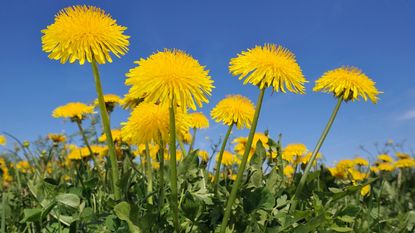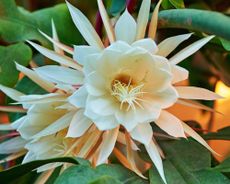Dandelion Plant History And Facts


To most gardeners, dandelions are pesky weeds that bully their way into well-maintained lawns or flower beds. However, dandelion plant history tells us that until fairly recently, the familiar meadow flowers were welcomed and highly valued for their nutritional and medicinal value. Read on to learn more about dandelion history and culture.
History of Dandelions
Plant historians know that dandelions have been an important component of traditional Chinese medicine for at least a thousand years. The plants, believed to be native to the Mediterranean, were well known by ancient Greeks, Romans and Egyptians. Medicinally, dandelion roots and leaves were used as a tonic to remove toxins from the bloodstream, acting as a gentle diuretic to improve the function of the digestive system.
Ancient physicians didn't know much about nutrition and vitamin deficiencies, but they realized that dandelions helped with a host of problems, including kidney, stomach and liver disorders, skin irritations, heartburn, gall bladder problems, diabetes, arthritis, anemia, constipation, toothaches, fevers, survey, and even warts and dandruff. The benefits aren't surprising, and modern herbalists now understand that growing dandelions are rich in Vitamins C, E and A, as well as calcium, potassium, zinc and iron.
The plants were also appreciated for their beauty. Dandelions were used to make dye - pale yellow from the sunny yellow blossoms and a purplish tint from the inner ribs of the leaves. Even today, many gardeners use the plants to make nutritious tea and flavorful wine.
Botanists say that some species of dandelion are native to North America. However, historians believe that early European settlers introduced the two most familiar species: red-seeded dandelion (Taraxacum erythrospermum) and the common dandelion (Taraxacum officinale) to the New World for their nutritional and medicinal benefits.
Both types have naturalized and growing dandelions are now found across the country, especially in disturbed soil such as croplands, construction sites, along roadsides and, of course - lawns.
Gardening tips, videos, info and more delivered right to your inbox!
Sign up for the Gardening Know How newsletter today and receive a free download of our most popular eBook "How to Grow Delicious Tomatoes."

A Credentialed Garden Writer, Mary H. Dyer was with Gardening Know How in the very beginning, publishing articles as early as 2007.
-
 7 Best Dwarf Tomato Plants
7 Best Dwarf Tomato PlantsHave a tiny growing space? Look for dwarf tomato seeds so you don’t miss out on summer’s juicy bounty.
By Susan Albert
-
 5 Night-Blooming Houseplants – Grow An Indoor Moon Garden
5 Night-Blooming Houseplants – Grow An Indoor Moon GardenThere is something uniquely special about night-blooming houseplants. Set the scene for a magical evening indoors with these fragrant flowering beauties.
By Amy Grant